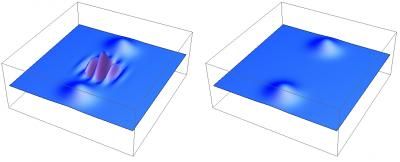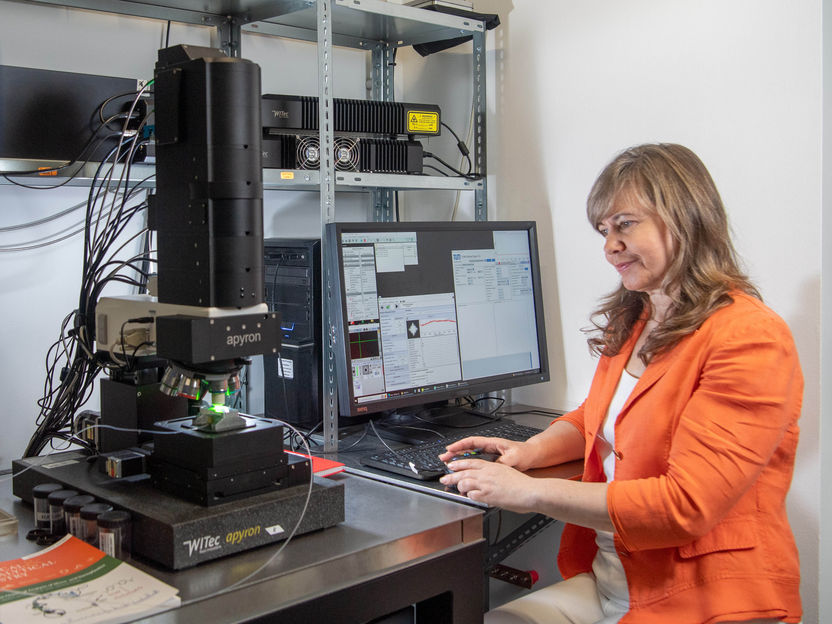Quantum behavior with a flash
Just as a camera flash illuminates unseen objects hidden in darkness, a sequence of laser pulses can be used to study the elusive quantum behavior of a large "macroscopic" object. This method provides a novel tool of unprecedented performance for current experiments that push the boundaries of the quantum world to larger and larger scales. A collaboration of scientists led by researchers from the Vienna Center for Quantum Science and Technology (VCQ) at the University of Vienna report this new scheme in PNAS.

Pulsed quantum optomechanics can directly probe quantum mechanical behavior, which is seen as the central rippling in this representation of a Schrödinger-cat state (left). Under constant observation these quantum features are washed out (right).
VCQ/University of Vienna
One of the most fascinating and still open questions in physics is how far quantum phenomena extend into our everyday world. To answer that, experiments need to peer into the quantum world at a completely new scale of mass and size. This is a bumpy road: it becomes increasingly difficult to detect the genuine quantum features as mass and size are increased.
Overcoming the "blur"
Publishing under the title "Pulsed quantum optomechanics" the research team proposes a method that uses flashes of light to observe quantum features of large objects with unprecedented resolution. The main idea is based on the fact that quantum objects, in contrast to classical objects, behave differently when they are being watched. "In current approaches, objects are constantly monitored and the possible quantum features are being washed out. This is in many ways analogous to the blurring of a photograph of a fast moving object", says Michael R. Vanner, lead author of the paper and member of the Vienna Doctoral School Complex Quantum Systems (CoQuS). "Loosely speaking, the flashes freeze the motion and create a sharp image of the quantum behavior."
How macroscopic can "quantum" be?
With this new tool, experiments will be able to peer into the quantum world at a completely new scale of mass and size. In particular, the scheme can be directly applied to the ongoing experiments that attempt to prepare quantum phenomena in micro-mechanical resonators, i.e. mechanically vibrating massive objects. "By analyzing the dynamics of such behavior, pulsed quantum optomechanics provides a path for investigating whether macroscopic mechanical objects can be used in future quantum technologies. It will also help shed light on nature's apparent division between the quantum and the classical worlds."
Original publication
Most read news
Other news from the department science

Get the analytics and lab tech industry in your inbox
By submitting this form you agree that LUMITOS AG will send you the newsletter(s) selected above by email. Your data will not be passed on to third parties. Your data will be stored and processed in accordance with our data protection regulations. LUMITOS may contact you by email for the purpose of advertising or market and opinion surveys. You can revoke your consent at any time without giving reasons to LUMITOS AG, Ernst-Augustin-Str. 2, 12489 Berlin, Germany or by e-mail at revoke@lumitos.com with effect for the future. In addition, each email contains a link to unsubscribe from the corresponding newsletter.
Most read news
More news from our other portals
Last viewed contents

Between test tube and algorithm: the laboratory of the future under the microscope - Study on the transformation of laboratories

SARS-CoV-2 detection in 30 minutes using gene scissors - Researchers introduce biosensor for the nucleic acid amplification-free detection of SARS-CoV-2 RNA

Tracing invisible particles - Automated analysis of microplastics




















































